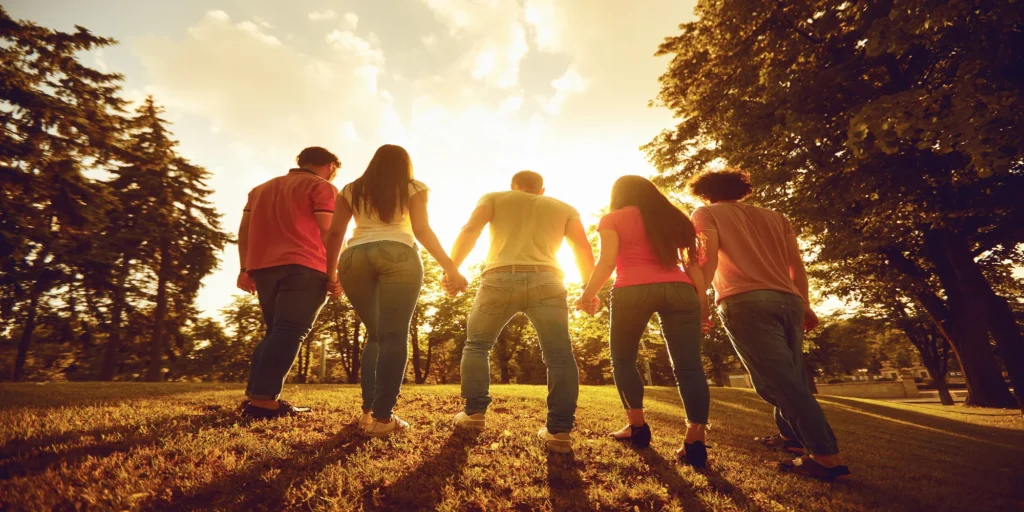Searching for help with drug and/or alcohol addiction? Call us now at (800) 643-2108.
What is Rainbow Fentanyl
Rainbow fentanyl is colorful candy laced with fentanyl, a synthetic opioid that’s 50 times more powerful than heroin and 100 times more powerful than morphine.
The candy-like version of fentanyl is designed to target children and young people and is available all across the United States.
It has been seized in multiple states, as reported by the US Drug Enforcement Administration (DEA). Rainbow fentanyl comes in several forms, including powder, pills, and blocks resembling sidewalk chalk.
Fentanyl is often mixed with other illegal drugs to make it look like a prescription drug. Initially, there were rumors that some colors of fentanyl-laced candy are more powerful than others. However, the DEA conducted lab testing which quashed these rumors.
With an exceptionally high overdose risk, fentanyl can prove fatal when mixed with other drugs. Serum concentrations of pure fentanyl between 150 and 250 ng/mL can cause death. In the case of poly-substance abuse, serum concentrations of 7 ng/mL or greater can result in death.
About 85% of deaths associated with fentanyl overdose involved at least one other substance. However, it’s not clear at which level the mixture of the drugs can be fatal.
When a potent opioid like fentanyl is masked to look like candy, the likelihood of overdose among both adults and teens increases. Ingestion of a small amount of fentanyl in any form can result in an overdose.
If you have consumed too much rainbow fentanyl, you’ll start experiencing the symptoms of a fentanyl overdose. Common symptoms associated with an overdose include pale skin, bluish fingernails or lips, an inability to speak or stay awake, vomiting, difficulty breathing, and a slow heartbeat.
Drug experts worry that if rainbow fentanyl will further contribute to the deadly opioid epidemic. However this time, they are concerned that more teens and potentially even children will be vulnerable.
What Does Rainbow Fentanyl Look Like?
Rainbow fentanyl looks like flavorful, bright-colored candy that would entice children. All colors of this illicitly manufactured fentanyl are equally dangerous.
Experts worry that the candy-like appearance will attract children and young adults and increase overdoses or addiction.
The US Drug Enforcement Administration (DEA) has seized rainbow fentanyl in many forms, all colorful versions of rainbows that would attract children or young teens.
The DEA and local law enforcement has been working relentlessly to remove rainbow fentanyl from streets.
The deputies of Multnomah Co Sheriff’s Office show another version of Rainbow Fentanyl that was seized during a warrant search.
Deputies warn of 'rainbow fentanyl'; other drugs, guns seized in warrant - https://t.co/v61eXDJ76P pic.twitter.com/ZJ1w6102IW
— Multnomah Co. Sheriff’s Office (@MultCoSO) August 16, 2022
Who is at Risk With Rainbow Fentanyl?
While everyone is at risk for rainbow fentanyl, children and young adults are more likely to consume it due to its colorful appearance.
The United States has seen a considerable increase in annual overdose deaths among children under 18 years. A massive share of these overdose deaths involves the use of fentanyl. Fentanyl overdose caused more than 60% of overdose deaths in the United States in 2021.
Fentanyl manufacturers commonly make fentanyl look like prescription drugs, according to Joseph Palamar, an associate professor teaching drug-use epidemiology at New York University Langone.
Colored fentanyl pills are often blue and have the logo M30 pressed on them which makes them look like the drug oxycodone. Many illegally obtained pills are infused with fentanyl.
A study published in Drug and Alcohol Dependence by Palamar and colleagues in May showed that the concentration of fentanyl in pills increased from 13.8% to 29.2% between 2018 and 2021.
College students, parents, young adults, and people with opioid use disorders need to look out for the potentially fatal drug. Anyone who comes across rainbow fentanyl should call 911 immediately to report it.
Never handle anything that may be fentanyl. Fentanyl is always dangerous regardless of the size, shape, and color of the pill.
In What States are Rainbow Fentanyl Being Found?
This extremely deadly drug is being found all over the United States. At the time of this article, there are news stories about drug seizures and overdoses related to rainbow fentanyl in:
Is Rainbow Fentanyl being found in schools?
Despite the discovery and seizure of rainbow fentanyl in over 18 states last month, the police have not found the candy-colored drug in schools yet. Schools across the country are warning parents, students, and staff members to be on the lookout for the ‘rainbow fentanyl’.
Federal officials recently seized thousands of pills at a U.S. port that they have refused to name. Though rainbow fentanyl has only been discovered in many states, police suspect that the drug cartels have targeted other regions in the country. The DEA themselves have not identified the states where the candy-like drug has been discovered.
A Nurse Practitioner on Tiktok, shared a compelling post about the rise of fentanyl use in schools in her area. Many schools are not prepared for these scenarios where younger teens overdose, because the schools are not equipped with Narcan.
How to protect your child and teens from Rainbow Fentanyl?
It’s important to protect children and teens from rainbow fentanyl. Though law enforcement authorities are working round-the-clock to beat this likely attempt of drug cartels to reach young people, parents need to engage in an open dialogue with their children to protect them from this deadly substance.
The use of illicit drugs is extremely common among teenagers. As a parent, you should be talking to your teen about the dangers of fentanyl, sharing with them the stories of overdoses among teens their age. You should also be watching for red flags and take action when you see one. Warning signs, such as not performing well in school, deteriorations in relationships, excessive or frequent mood swings, are common signs of addiction. The best way to ensure your children’s safety from these drugs is to provide them with support for their mental health.
If you have teen children, talk to them about this alarming trend. You can show them how rainbow fentanyl and fentanyl looks in general. You need to understand that teenagers are often tempted to take drugs.
Even those teens that you would think would never touch drugs, often end up experimenting at least once. The truth is that drug experimentation for teens is extremely deadly compared to decades past. Especially now that fentanyl has come into the picture.
In case of an emergency, keep a Narcan at home. It’s a prescription medicine used to deal with a suspected opioid overdose emergency. In many states, you can get Narcan for free from your pharmacy or from certain organizations.








